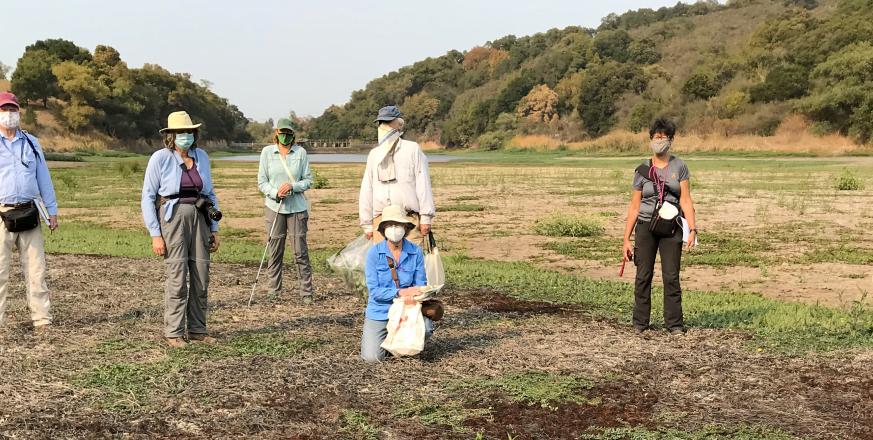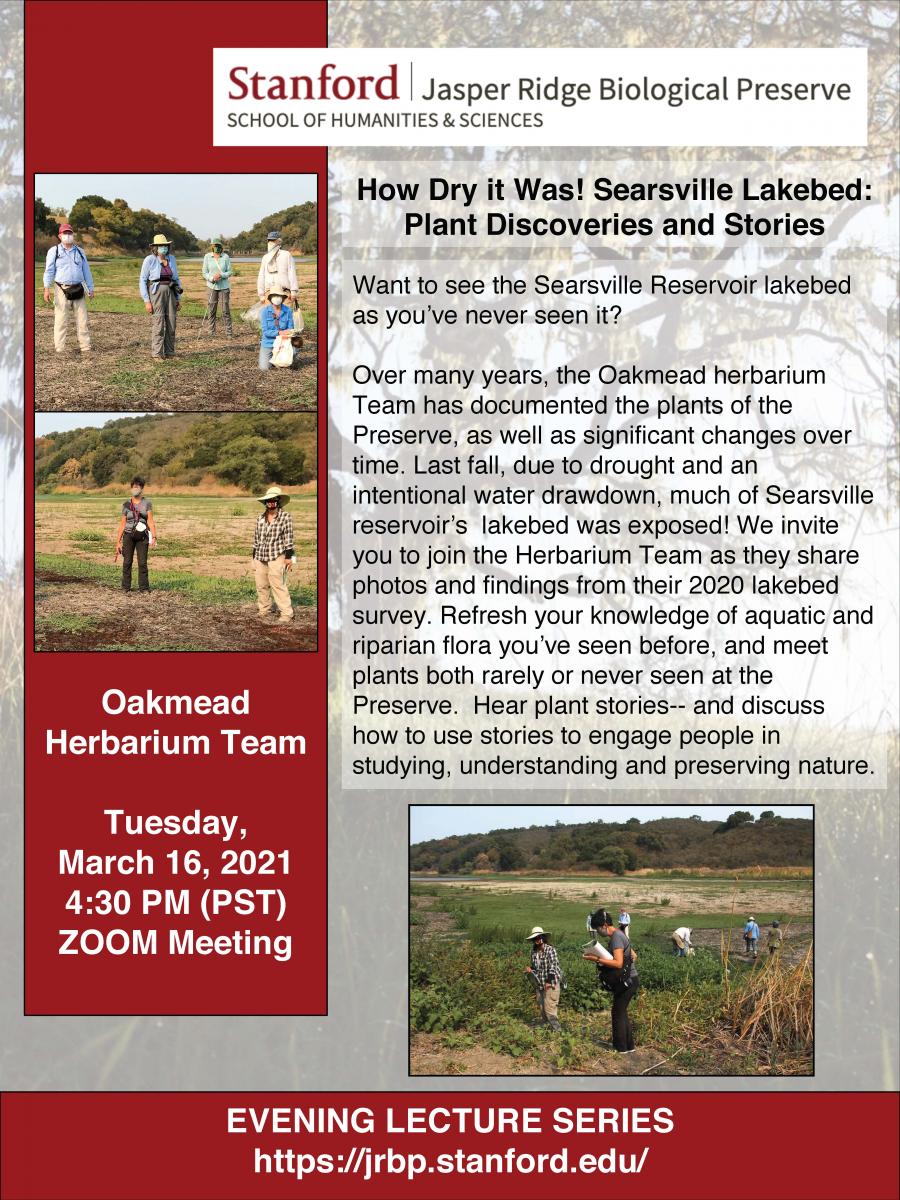How Dry it Was! Searsville Lakebed: Plant Discoveries and Stories

How Dry it Was! Searsville Lakebed: Plant Discoveries and Stories
Members of Oakmead Herbarium Team
Tuesday, March 16, 2021 4:30 PM (PST)
Carl Cheney grew up in Southern California chaparral, graduated from Stanford in 1965 and from docent training in 2003. He did his docent project on the native trees of Jasper Ridge, and joined the Herbarium group in 2013.
Mary Bernstein joined the Jasper Ridge docent ranks in 2019 and immediately joined the Herbarium walks. She has been hiking the Santa Cruz Mountains since the age of 10.
Dawn Neisser first visited Jasper Ridge in 1978 as a student of Herb Dengler. In 2014, she returned to the Ridge as a Patrol Ranger, and became a member of the 2016 Docent Class. She started walking with the Herbarium team in 2017.
Diane Renshaw is a terrestrial ecologist who worked as a consultant for over 40 years throughout California and the arid West. Diane has been a docent and member of the Herbarium team since 2008; her current interests include lichens and fire ecology.
Rebecca Reynolds is a JR docent from the 2015 class who joined the Herbarium Group that same year. Her special interests are in bryophytes, especially moss, and in keeping the herbarium collection in good condition.
 Want to see the Searsville Lake lakebed as you’ve never seen it? Last fall, due to drought and an intentional water drawdown, much of Searsville Reservoir's lakebed was exposed. On October 7, the herbarium team--observing Stanford’s Covid requirements--used this unique opportunity to conduct an unprecedented three-hour field survey of the dry lakebed.
Want to see the Searsville Lake lakebed as you’ve never seen it? Last fall, due to drought and an intentional water drawdown, much of Searsville Reservoir's lakebed was exposed. On October 7, the herbarium team--observing Stanford’s Covid requirements--used this unique opportunity to conduct an unprecedented three-hour field survey of the dry lakebed.
The richness of Jasper Ridge’s flora is unique, even within the diversity of the California Floristic Province. Through the lens of local rarity the significance of JRBP’s vascular plant biodiversity is even greater than other commonly-used measures of floristic richness. Over many years, the Oakmead Herbarium Team has documented the plants of the Preserve, as well as significant changes over time.
How did the lake drawdown and lakebed exposure affect vegetation patterns? What familiar plants did we see in new ways? What new plants did we see, native and non-native? How did what we saw relate to succession patterns seen before at the Lake’s edges? What are the stories of these plants?
We invite you to join the Herbarium Team as they share photos and findings from their survey. See aerial photos of how the lake edge is changing. Refresh your knowledge of aquatic and riparian flora you’ve seen before, and meet plants both rarely or never seen at the Preserve. Hear plant stories-- and discuss how to use stories to engage people in studying, understanding and preserving nature.
Please email Jorge Ramos (jorge.ramos @ stanford.edu) for the Zoom link.




